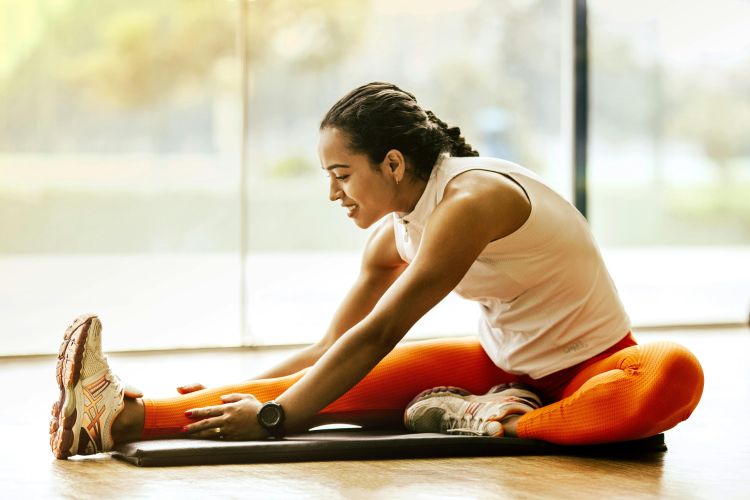Stretching Should be a Part of Your Fitness Routine
Explore different types of stretching for different effects.

Stretching and Flexibility
Stretching is an important part of overall fitness and should be practiced regularly, not just during fitness workouts. The Mayo Clinic recommends stretching all major muscle groups such as the thighs, calves, lower back, neck, and shoulders, at least twice a week, holding each stretch for about 30 seconds. It’s also helpful to stretch muscles you use frequently at work or during activities, such as the wrists, elbows, ankles and knees.
The main purpose of stretching is to improve flexibility and increase the range of motion. Individual differences such as age, gender and the type of stretching performed can affect how effective it is. For personalized guidance, it’s best to consult with a physician or healthcare provider.
Types of Stretching
Static Stretching
Moving a muscle to the point of tension and holding the position for 15–30 seconds without pain. Common examples include hamstring stretches. Static stretching is best done after exercise, while muscles are warm, and is most beneficial for people whose activities require flexibility. The Cleveland Clinic recommends incorporating static stretches as a way to increase range of motion and flexibility, and after exercise to prevent post-workout stiffness.
Pros of Static Stretching
- Can increase flexibility
- Reduces muscle tension
- May improve posture
- Promotes relaxation and stress relief
Cons of Static Stretching
- May decrease muscle power and performance
- Can cause overstretching and injury
- Not generally effective for warming up
- Not suitable for those with acute injuries
Dynamic Stretching
Moving a limb repeatedly through its full range of motion, such as with leg swings, walking lunges, or torso twists. This type of stretching is best used as part of a warm-up routine and is particularly useful for sports that involve running or jumping.
Pros of Static Stretching
- Increases blood flow and heart rate
- Can improve flexibility and mobility
- May enhance athletic performance
- May reduce risk of injury
Cons of Static Stretching
- May not be suitable for everyone, depending on their range of motion or flexibility
- May not be enough warm-up for high-intensity activities
Pre-Contraction Stretching
Involves contracting a muscle briefly before relaxing it into a stretch.
For general fitness, performing static stretching is recommended after an active warm-up, 2–3 days per week. Hold each stretch for 15–30 seconds, repeating it 2–4 times.
General Guidelines
Stretching should ideally accompany your workouts, but even if you don’t exercise regularly, stretching 2–3 times per week can help maintain flexibility and long-term mobility. If you have an injury or chronic condition, consult your healthcare provider for safe stretching recommendations. The benefits of different types of stretching mean that it is good to spend some time doing each of the different types each week as a part of a healthy routine.
Michigan State University offers both online and in-person tai chi classes, providing a great way to start or continue exercising. For more information or to find a class that fits your schedule, visit the Tai Chi website



 Print
Print Email
Email